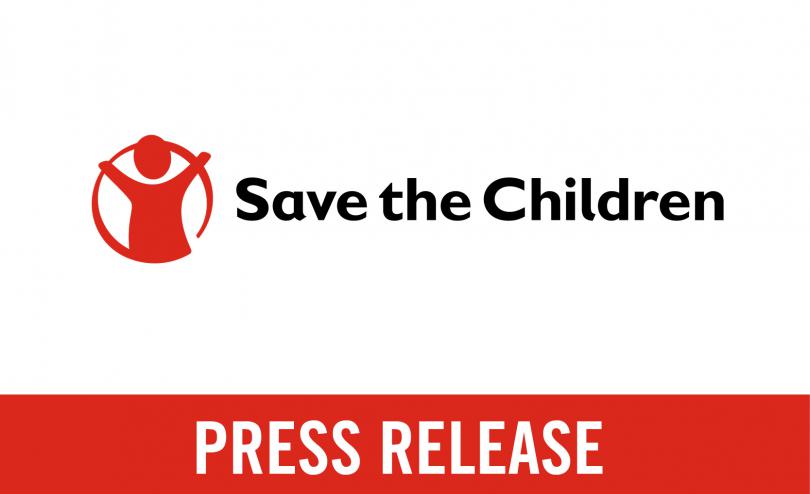Hunger rising among children in drought-hit Niger as violence drives influx of refugees

NIAMEY, Niger, 29 June, 2022 – A surge in attacks by armed groups in Mali, Burkina Faso and northern Nigeria in the past six months has forced nearly 36,000 people[1] over the border into the driest parts of Niger, exacerbating a severe hunger crisis with children paying the heaviest price, said Save the Children.
The influx of refugees is putting additional pressure on a country at the forefront of the climate crisis that is battling a spiraling food crisis after a series of failed rainy seasons devastated crops and livestock and decades of desertification. Rising food prices fueled by the war in Ukraine are contributing to the rapidly escalating disaster.
Latest figures show the number of people facing hunger between June and August this year will be 57% more than a year ago[2]. An estimated 3.6 million people – about one seventh of the population - are at risk of severe food insecurity, with almost a half million of children under 5 suffering from the most deadly form of malnutrition[3].
Most of the new arrivals into Niger are women and children in desperate need of food and water, shelter and clothing, as well as access to basic services such as health care and education. Children facing malnutrition are much more susceptible to disease and illnesses, and acute malnutrition can impede their mental and physical development.
This year, in the Sahel region, it is estimated that 6.3 million children under 5 will suffer from malnutrition, of which more than 1.4 million children will suffer from severe acute malnutrition, a 62% jump from 2018.[4] In Niger, children in the east and south of the country, particularly in the regions of Maradi and Zinder, are the most affected.
Families facing one of the most difficult seasons in a decade are now sharing scarce food supplies with people fleeing violence but the crisis is going underreported and is underfunded with other crisis dominating headlines.
Hadjara*, 35, is a refugee and mother from Nigeria, who recently fled to Maradi in Niger with her 3 children. She said:
“We managed to get help in the village, but the last time we got a distribution of food was 3-4 months ago. I do some business activities: millet cake for sale or buy and sell things. I borrow money or grain from the neighbouring village with local communities and when I finish the activity, I pay back the loan. For the harvest season, I work in the fields of the villagers in the area for money or food.
“I want everything to change, everything, at the same time for myself and my family. I want food, millet, sorghum, maize, clothes. I want my children to go to school, I want money to make a small business.”
Dr Adamou Moumouni works at a Save the Children-supported Centre for malnourished children in Aguié’s hospital, Maradi. He said:
“During the lean season (the gap between harvests that starts in June and lasts for about four months) malnutrition cases increase. Here, out of 100 beds, already 75 are occupied. We are expecting a shortfall in the number of beds available in relation to the number of children admitted, which will continue to increase until December. Sometimes they will have to share a bed, which is not ideal. But we have no choice, we must treat them all.
“The centre is taking in more and more children, and admissions can sometimes be five times higher than normal during the lean season, with communities having less to eat.”
Niger, with a population of about 26 million people that is hosting a total of 360,000[5] refugees, regularly faces extreme climate events, with droughts in 2005 and 2010, and exceptional rainfall in 2012 and 2020. The 2010 drought was one of the most severe on record, affecting nearly 7 million people.
Ilaria Manunza, Save the Children Country Director in Niger, said:
"Hopes for this year are starting to fade, with forecasts indicating that the food situation is likely to deteriorate further during the lean season that is already beginning.
"While the world's attention is focused on the war in Ukraine and other high-profile crises, children are at risk in Niger and in the Sahel. The situation for children is looking dire, we will have failed if we don't respond in time to help children and their families."
A humanitarian appeal for $1.8 billion for Burkina Faso, Mali and Niger this year has so far only been funded to 14% as of mid-June[6].
In addition to the effects of climate change and a decade-long conflict in the Sahel, families are facing the threat of epidemics such as measles and cholera.
Insecurity has led to the closure of nearly 800 schools in Niger to date, disrupting the education of almost 68,000 school children.[7]
Save the Children’s work in Niger spans child protection, health, nutrition, food security and livelihoods, education, water and sanitation. The organisation is also actively advancing the resilience agenda. In a context of chronic insecurity, dynamic changes and acute shocks, Save the Children is working to support girls, boys and their families to face chronic vulnerability, seasonal stresses and acute shocks.
ENDS
For further enquiries please contact:
- Florence Cisse Florence.Cisse@savethechildren.org (based in Dakar)
- Daphnee Cook Daphnee.Cook@savethechildren.org (based in Nairobi)
- Our media out of hours (BST) contact is media@savethechildren.org.uk / +44(0)7831 650409
Notes to editors:
According to UNHCR, in 2022, a total of 13,706 people from northwestern Nigeria crossed the border into the Maradi region of Niger, fleeing insecurity and violence.
Since the beginning of this year, Niger has experienced several waves of Malian refugees arriving in the Tillabéri region. Since January, the number of arrivals has reached 3,617 people.
[4] https://reliefweb.int/report/burkina-faso/wca-regional-nutrition-working-group-joint-note-nutrition-situation-west-and
[5] https://reliefweb.int/report/niger/niger-faces-refugee-influx-violence-increases-neighbouring-states
[6] https://www.humanitarianresponse.info/en/operations/west-and-central-africa/west-and-central-africa-regional-funding-status
[7] Data from Ministry of Education in Niger




